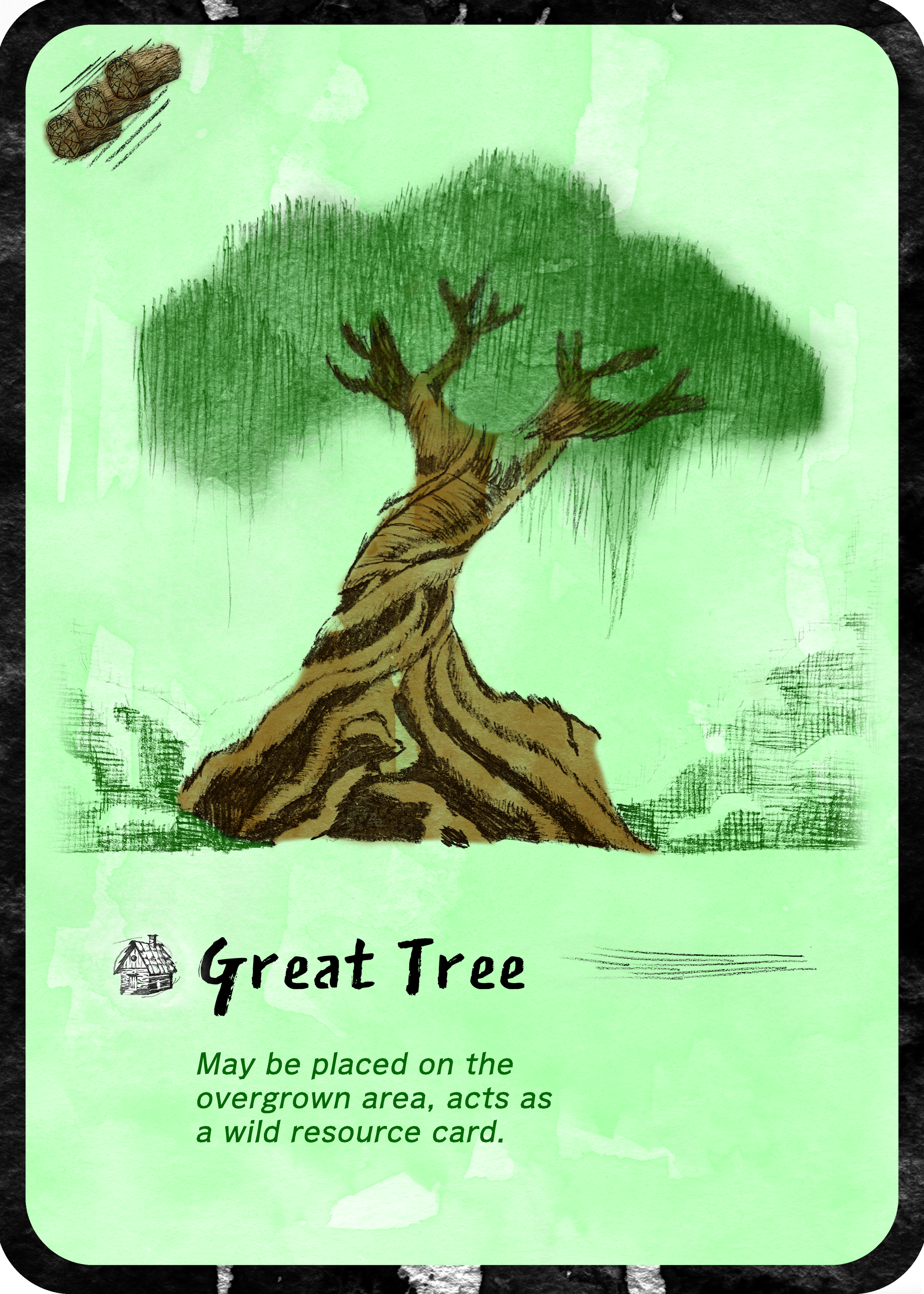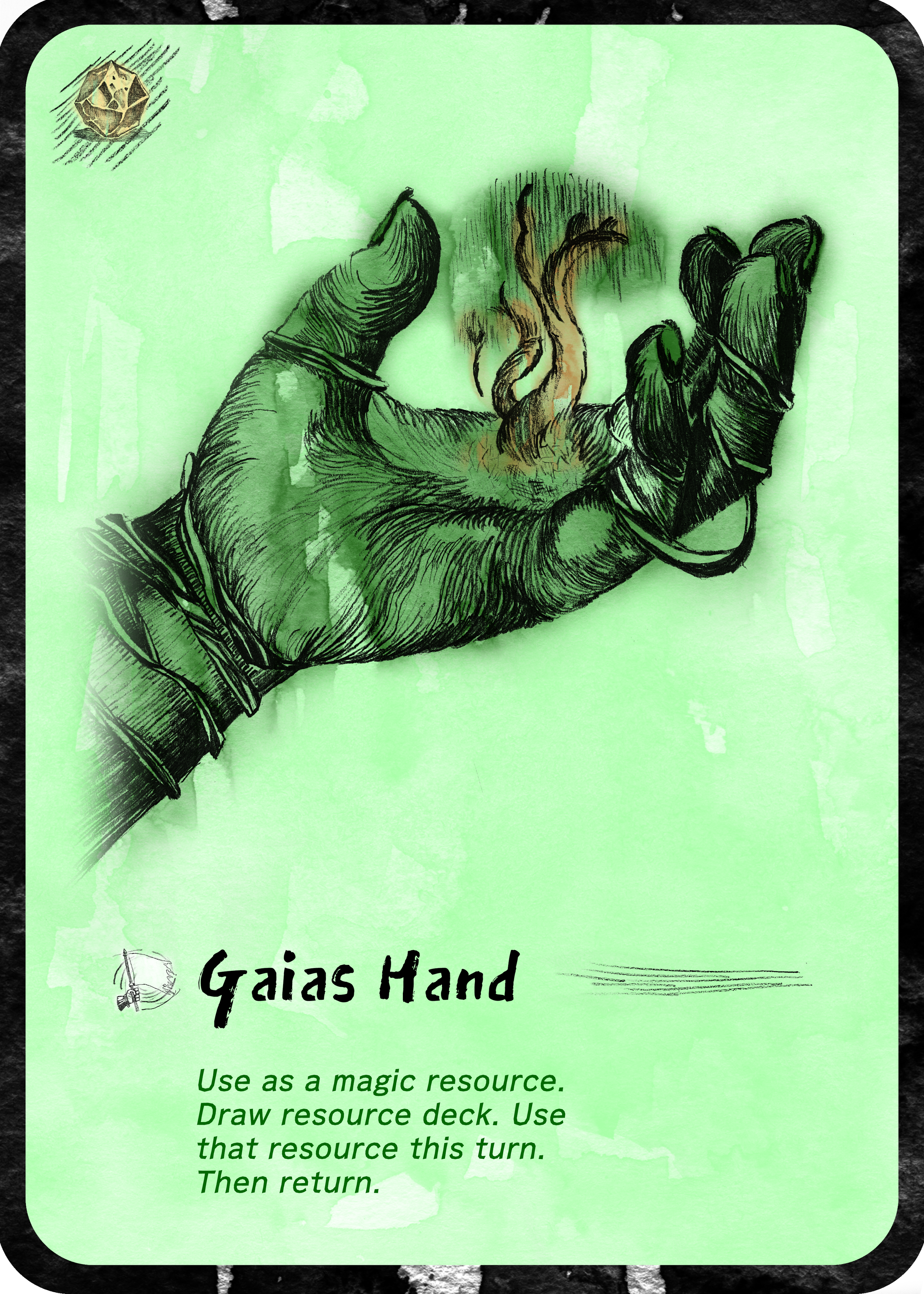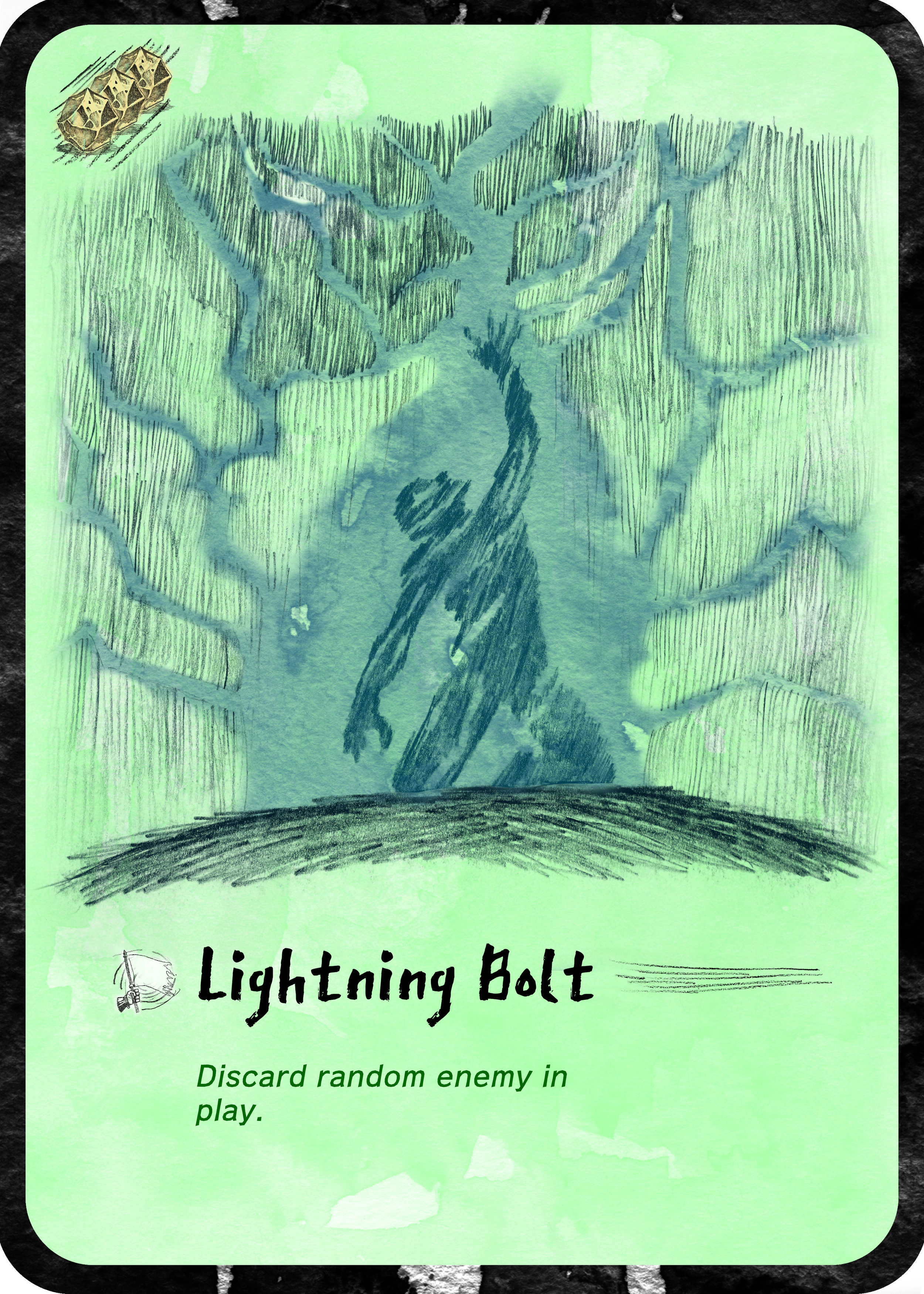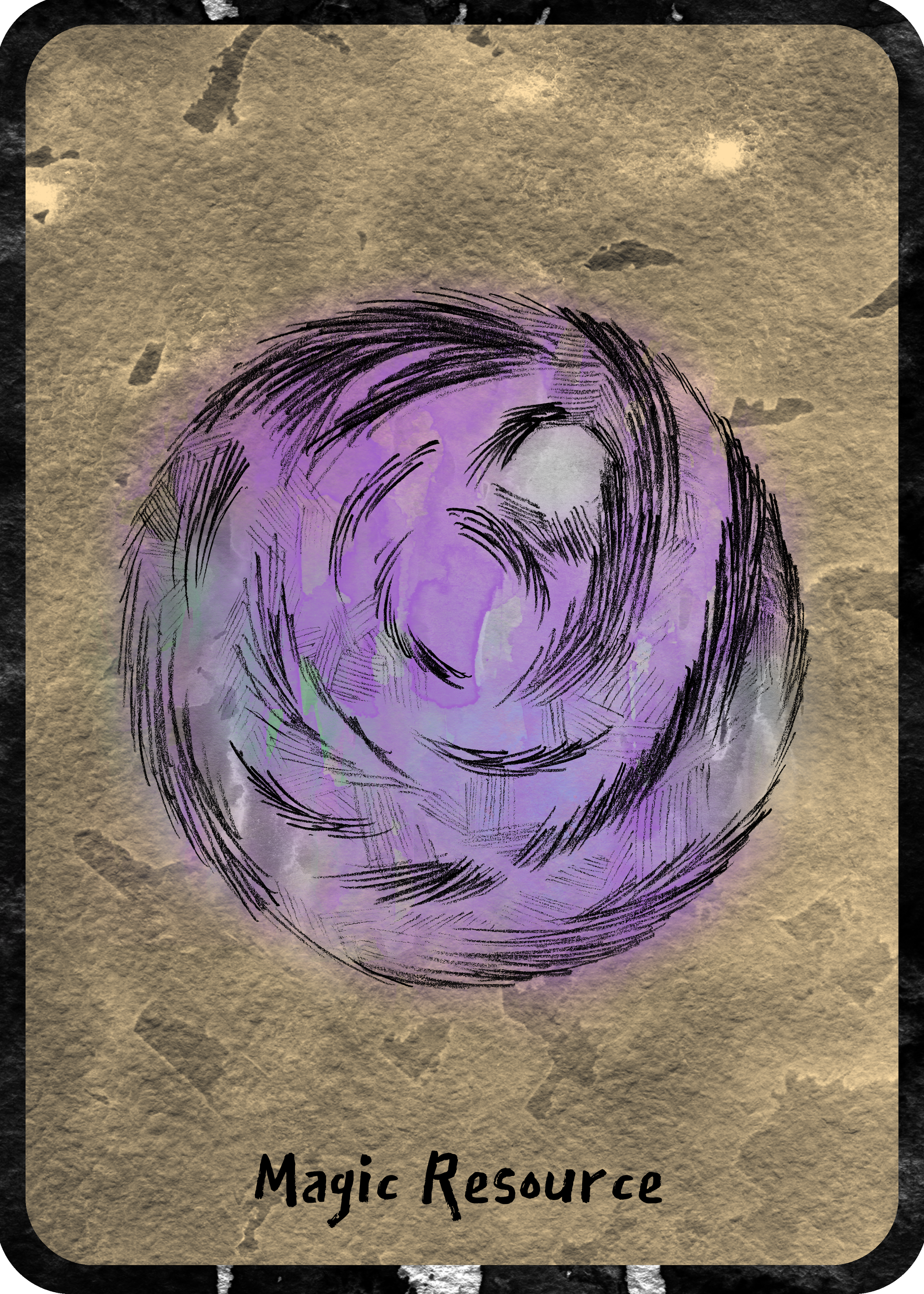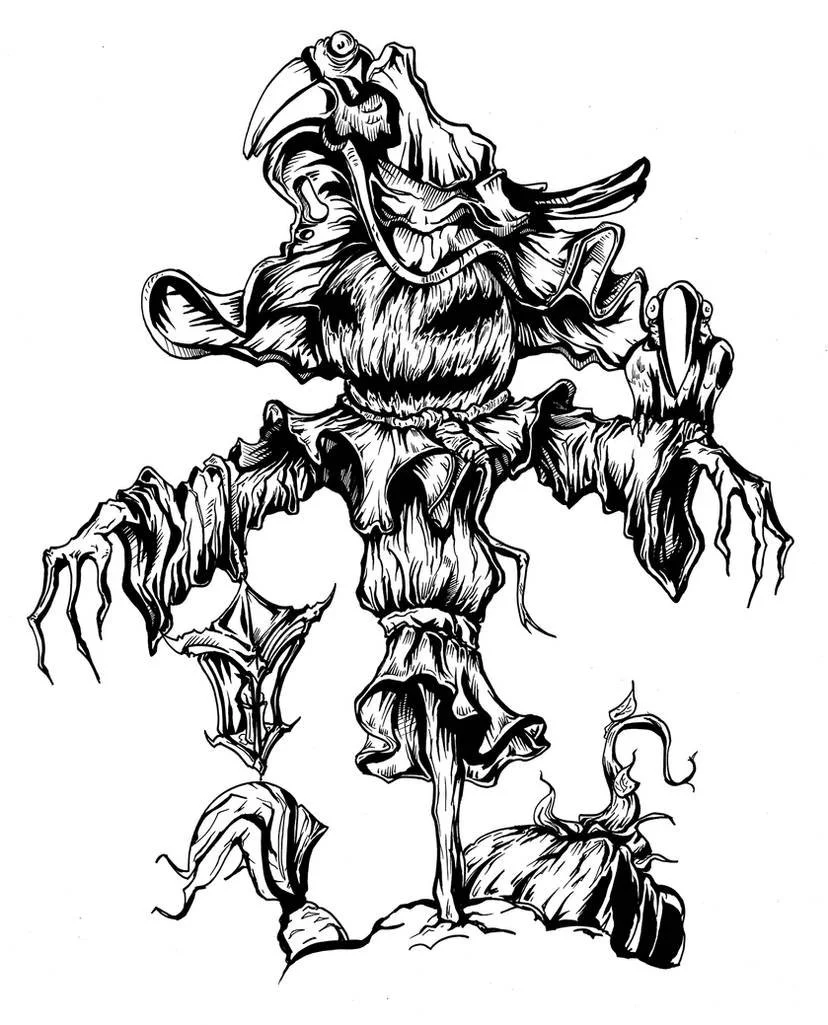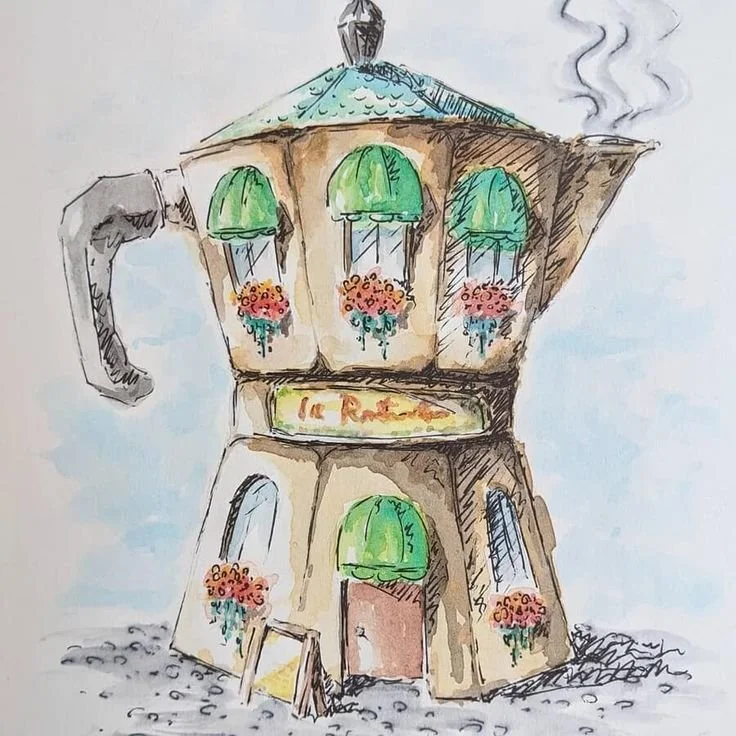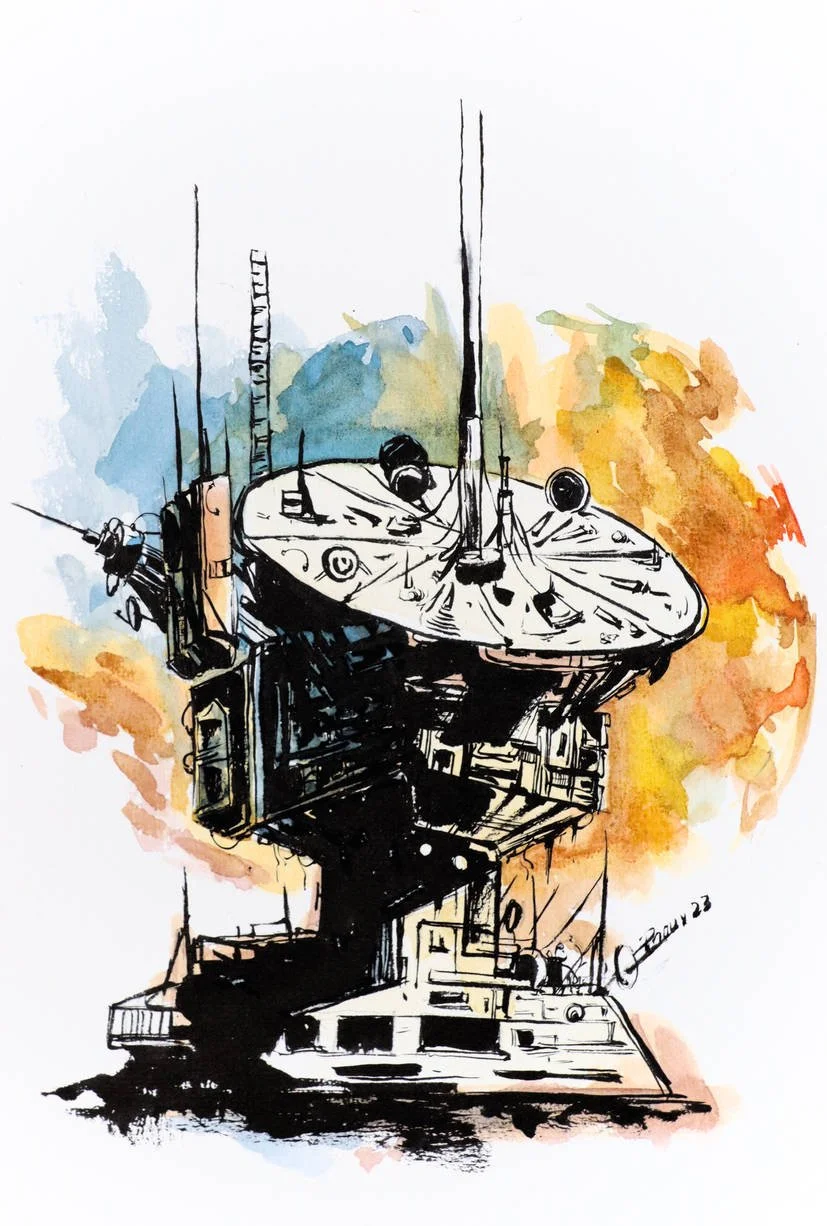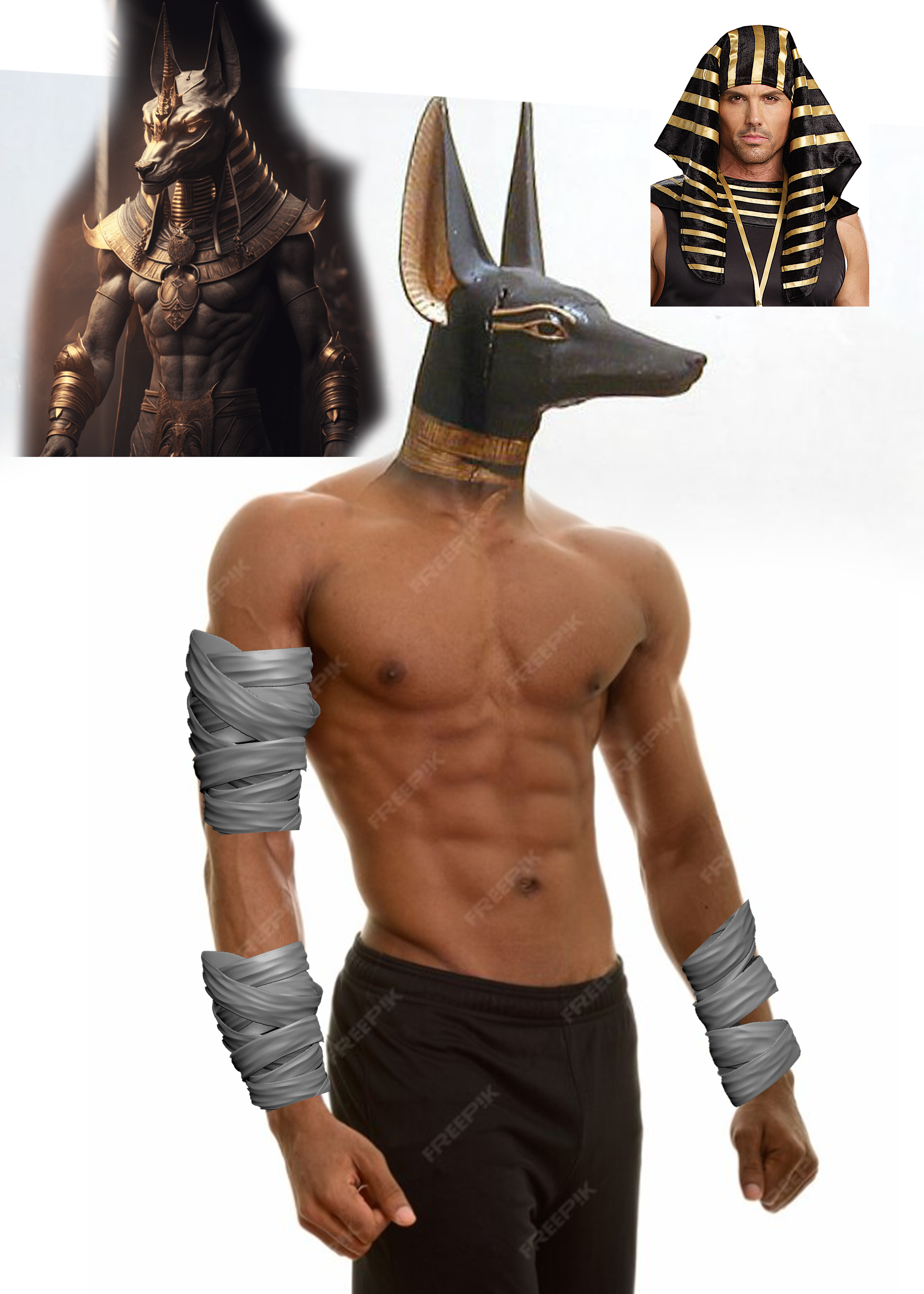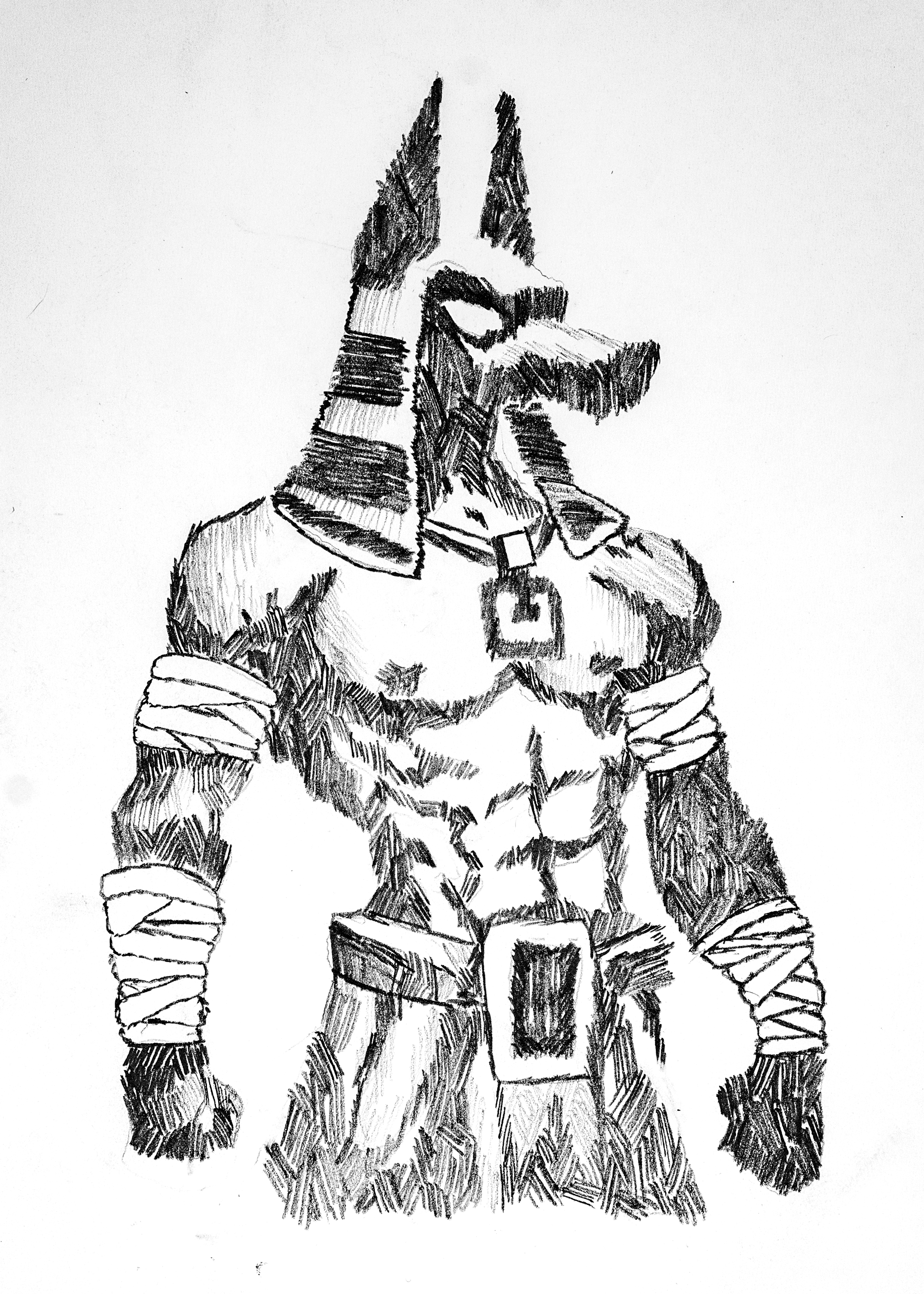The Process of Designing a Deckbuilding Game
With aspirations in the tabletop gaming industry, I chose to develop a dark fantasy deckbuilding game for my senior project. This project allowed me to merge my skills in illustration with game design principles, resulting in a unique card game featuring a unique hand-drawn style. The project encompassed creating a complete deck for one of four playable races, along with several common cards, challenging me to balance visual aesthetics with gameplay mechanics. Through this process, I refined my drawing techniques and gained insights into the intricate world of game design, setting a foundation for my future career in the board and card game sector.
I drew 20 hand-drawn illustrations, making a total of 16 distinct Cards.

Some design inspirations.
Style
The card illustrations blend mechanical pencil precision with watercolor fluidity to evoke a dark fantasy setting without the graphic use of blood or violence. Intense crosshatching techniques build depth and shadow, while watercolor adds an organic texture and softens the linework. This contrast between structured pencil work and unpredictable color creates visually complex designs that capture the game's grim atmosphere. The approach emphasizes mood and tension through technique rather than explicit imagery, resulting in striking visuals that align with the game's theme while remaining accessible and easy to understand at a glimpse.
Each race features a distinct color palette, with select colors shared across all races for visual cohesion. This project focused on creating one example card for each race to establish the overall aesthetic. Additionally, I designed the universal resource cards. These card designs allow for more rigorous game testing and design refinement.
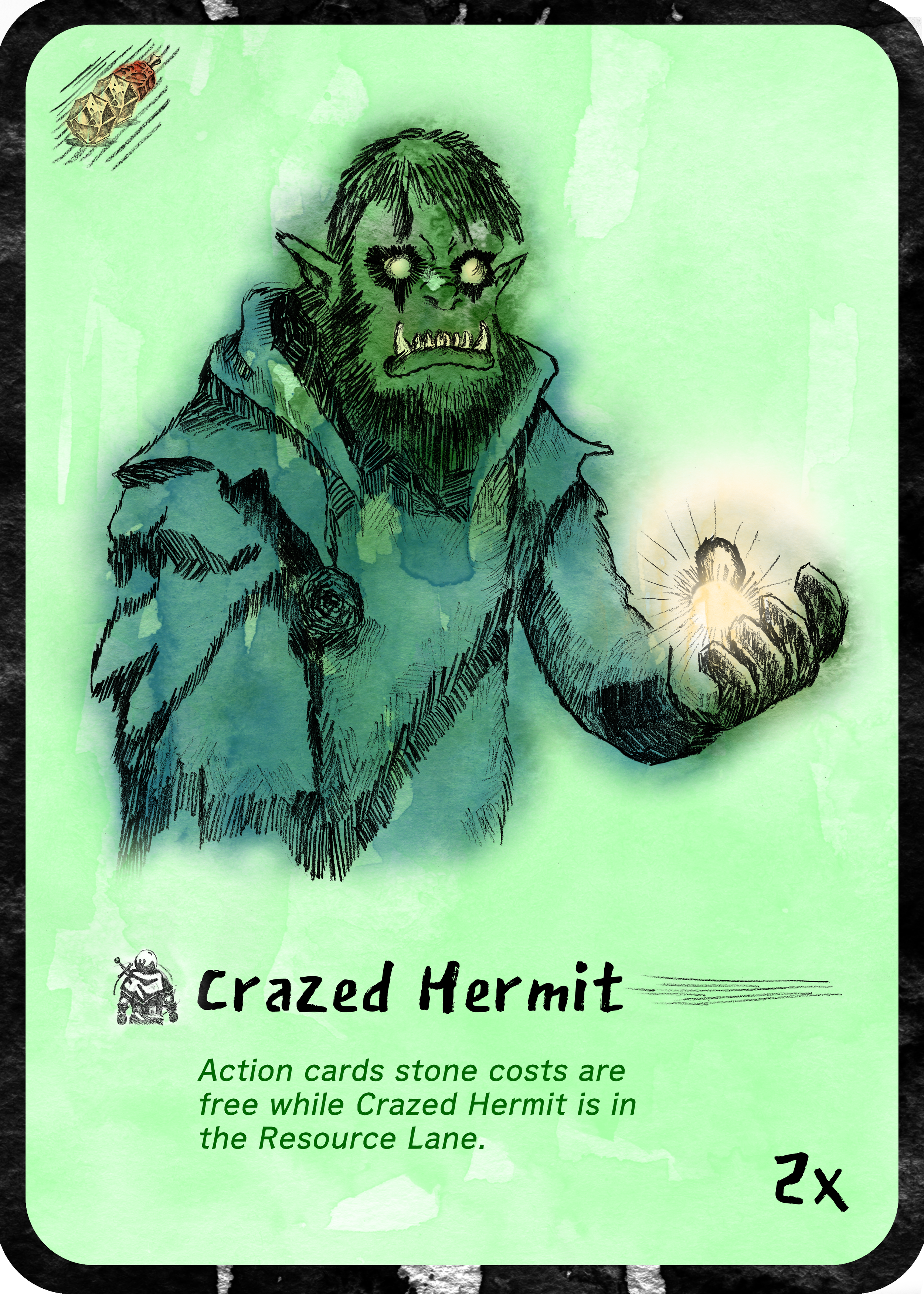



From Start to Finish
-

Initial Sketch
Create initial light sketches to develop the design concept.
-

Refined Drawing
Start a new drawing and refine the sketch using cross-hatching mechanical pencil technique.
-

Design Draft
Photograph the drawing and import it into Photoshop. Add coloring, text, and elements.
-

Final Card Design
Adjust all card designs for consistency across the set. Movement of text, elements, and color.
Reference for Sketches
Photoshop Composite
Heretic Sketch
Final Card
Back of Card Design
For the back design of my card game, I focused on capturing a dark fantasy setting. The design features a bold red background with a weathered texture, giving it an ancient, ominous feel. At the center, a black and red circular emblem with radiating lines and gear-like shapes suggests mysticism and machinery. The hand-drawn style of the emblem enhances the atmosphere of danger and mystery, setting the tone for the game's immersive world.

Game Mechanics
To create the illustrations, I first had to come up with the concept of the game to inform my design decisions better. I have for you here a brief summary below.
-
The game revolves around four distinct factions vying for control of a powerful orb.
Orc Shamans: Protectors of nature, they aim to safeguard the orb and preserve its natural state.
Human Wildlings: Driven by destructive impulses, they seek to harness the orb's power for domination over all factions.
Gnome Inventors: Pursuing progress at any cost, they desire the orb to power their city and stave off an endless winter.
Anubite Cultists: Bent on eradicating all perceived magic, their goal is to destroy the orb completely.
These conflicting motivations drive the strategic gameplay, as each faction employs unique abilities aligned with their core beliefs and objectives. For example, the Orc cards often reward the use and gain of resource cards.
-
Victory is achieved upon reaching 5 victory points. In each round, players take turns playing one card at a time from their 5-card hand.
The game features three strategic lanes:
Resource Lane: Winning here grants additional resources.
Destruction Lane: Victory allows players to deplete opponent resources.
Victory Point Lane: Winning directly contributes to the 5-point goal. Upon a tie, both players do not gain a Victory Point.
This tri-lane system forces players to balance immediate victory pursuit against long-term resource management. Ties result in both players gaining the lane's effect (unless it is the victory lane), adding another layer of strategic consideration.
The lane mechanics create tension between securing direct victory points and building advantages for future rounds, demanding constant tactical reassessment from players.
-
Draw Phase: Players draw five cards from their deck.
Action Phase (alternating turns):
Play a card from hand to a lane
Purchase new cards using available resources
Play cards from hand, paying required resource costs
Resolution:
Determine winners for each lane
Apply lane effects (resources, destruction, victory points)
Resolve ties
Clean-up:
Discard played cards
Add purchased cards to the discard pile
Players begin with a 10-card starter deck. Throughout the game, they will acquire new cards, lose others, and cycle through their deck. Resource management is crucial, as players must balance using resources to play powerful cards against saving them to purchase new ones.
This structure emphasizes strategic decision-making in card play, resource allocation, and deck building.

